 Introduction toTransformers for NLPWith the Hugging Face Libraryand Models to Solve ProblemsShashank Mohan JainIntroduction to Transformers for NLP: With the Hugging Face Library andModels to Solve Problems Shashank Mohan Jain Bangalore, India ISBN-13 (pbk): 978-1-4842-8843-6 ISBN-13 (electronic): 978-1-4842-8844-3 https://doi.org/10.1007/978-1-4842-8844-3 Copyright 2022 by Shashank Mohan Jain This work is subject to copyright. All rights are reserved by the Publisher, whether the whole or part of the material is concerned, specifically the rights of translation, reprinting, reuse of illustrations, recitation, broadcasting, reproduction on microfilms or in any other physical way, and transmission or information storage and retrieval, electronic adaptation, computer software, or by similar or dissimilar methodology now known or hereafter developed. Trademarked names, logos, and images may appear in this book. Rather than use a trademark symbol with every occurrence of a trademarked name, logo, or image we use the names, logos, and images only in an editorial fashion and to the benefit of the trademark owner, with no intention of infringement of the trademark. The use in this publication of trade names, trademarks, service marks, and similar terms, even if they are not identified as such, is not to be taken as an expression of opinion as to whether or not they are subject to proprietary rights. While the advice and information in this book are believed to be true and accurate at the date of publication, neither the authors nor the editors nor the publisher can accept any legal responsibility for any errors or omissions that may be made.
Introduction toTransformers for NLPWith the Hugging Face Libraryand Models to Solve ProblemsShashank Mohan JainIntroduction to Transformers for NLP: With the Hugging Face Library andModels to Solve Problems Shashank Mohan Jain Bangalore, India ISBN-13 (pbk): 978-1-4842-8843-6 ISBN-13 (electronic): 978-1-4842-8844-3 https://doi.org/10.1007/978-1-4842-8844-3 Copyright 2022 by Shashank Mohan Jain This work is subject to copyright. All rights are reserved by the Publisher, whether the whole or part of the material is concerned, specifically the rights of translation, reprinting, reuse of illustrations, recitation, broadcasting, reproduction on microfilms or in any other physical way, and transmission or information storage and retrieval, electronic adaptation, computer software, or by similar or dissimilar methodology now known or hereafter developed. Trademarked names, logos, and images may appear in this book. Rather than use a trademark symbol with every occurrence of a trademarked name, logo, or image we use the names, logos, and images only in an editorial fashion and to the benefit of the trademark owner, with no intention of infringement of the trademark. The use in this publication of trade names, trademarks, service marks, and similar terms, even if they are not identified as such, is not to be taken as an expression of opinion as to whether or not they are subject to proprietary rights. While the advice and information in this book are believed to be true and accurate at the date of publication, neither the authors nor the editors nor the publisher can accept any legal responsibility for any errors or omissions that may be made.
The publisher makes no warranty, express or implied, with respect to the material contained herein. Managing Director, Apress Media LLC: Welmoed Spahr Acquisitions Editor: Celestin Suresh John Development Editor: James Markham Coordinating Editor: Shrikant Vishwakarma Cover designed by eStudioCalamar Cover image by and machines on Unsplash (www.unsplash.com) Distributed to the book trade worldwide by Apress Media, LLC, 1 New York Plaza, New York, NY 10004, U.S.A. Phone 1-800-SPRINGER, fax (201) 348-4505, e-mail orders-ny@springer-sbm.com, or visit www.springeronline.com. Apress Media, LLC is a California LLC and the sole member (owner) is Springer Science + Business Media Finance Inc (SSBM Finance Inc). SSBM Finance Inc is a Delaware corporation. For information on translations, please e-mail booktranslations@springernature.com; for reprint, paperback, or audio rights, please e-mail bookpermissions@springernature.com.
Apress titles may be purchased in bulk for academic, corporate, or promotional use. eBook versions and licenses are also available for most titles. For more information, reference our Print and eBook Bulk Sales web page at http://www.apress.com/bulk-sales. Any source code or other supplementary material referenced by the author in this book is available to readers on GitHub (https://github.com/Apress). For more detailed information, please visit http://www.apress.com/source-code. Printed on acid-free paper Table of Contents About the Author vii About the Technical Reviewer ix Introduction xi Chapter 1: Introduction to Language Models 1 History of NLP 2 Bag of Words 4 n-grams 6 Recurrent Neural Networks 8 Language Models 11 Summary16 Chapter 2: Introduction to Transformers 19 What Is a Seq2Seq Neural Network? 20 The Transformer 21 Transformers 22 Summary36 Chapter 3: BERT 37 Workings of BERT 38 Masked LM (MLM) 38 Next Sentence Prediction 41 Inference in NSP 43 iii Table of ConTenTs BERT Pretrained Models 44 BERT Input Representations45 Use Cases for BERT 46 Sentiment Analysis on Tweets 47 Performance of BERT on a Variety of Common Language Tasks 48 Summary49 Chapter 4: Hugging Face 51 Features of the Hugging Face Platform 53 Components of Hugging Face 54 Summary67 Chapter 5: Tasks Using the Hugging Face Library 69 Gradio: An Introduction 69 Creating a Space on Hugging Face 70 Hugging Face Tasks 72 Question and Answering 72 Translation 78 Summary 84 Zero-Shot Learning 90 Text Generation Task/Models 95 Text-to-Text Generation 106 Chatbot/Dialog Bot123 Code and Code Comment Generation 126 Code Comment Generator 131 Summary136 iv Table of ConTenTs Chapter 6: Fine-Tuning Pretrained Models 137 Datasets 139 Fine-Tuning a Pretrained Model 142 Training for Fine-Tuning142 Inference 150 Summary151 Appendix A: Vision Transformers 153 Self-Attention and Vision Transformers153 Summary157 Index 159 v  About the AuthorShashank MohanJain has been working in the IT industry for around 22 years mainly in the areas of cloud computing, machine learning, and distributed systems.
About the AuthorShashank MohanJain has been working in the IT industry for around 22 years mainly in the areas of cloud computing, machine learning, and distributed systems.
He has keen interests in virtualization techniques, security, and complex systems. Shashank has many software patents to his name in the area of cloud computing, IoT, and machine learning. He is a speaker at multiple reputed cloud conferences. Shashank holds Sun, Microsoft, and Linux kernel certifications. vii  About the Technical ReviewerAkshay Kulkarni is a renowned AI and machine learning evangelist and thought leader. He has consulted several Fortune 500 and global enterprises on driving AI and data scienceled strategic transformation.
About the Technical ReviewerAkshay Kulkarni is a renowned AI and machine learning evangelist and thought leader. He has consulted several Fortune 500 and global enterprises on driving AI and data scienceled strategic transformation.
Akshay has rich experience in building and scaling AI and machine learning businesses and creating significant impact. He is currently a data science and AI manager at Publicis Sapient, where he is a part of strategy and transformation interventions through AI. He manages high-priority growth initiatives around data science and works on various artificial intelligence engagements by applying state-of-the-art techniques to this space. Akshay is also a Google Developers Expert in machine learning, a published author of books on NLP and deep learning, and a regular speaker at major AI and data science conferences. In 2019, Akshay was named one of the top 40 under 40 data scientists in India. In his spare time, he enjoys reading, writing, coding, and mentoring aspiring data scientists.
He lives in Bangalore, India, with his family. ix Introduction This book takes the user through the journey of natural language processing starting from n-gram models to neural network architectures like RNN before it moves to the state-of-the-art technology today, which is known as the transformers. The book details out the transformer architecture and mainly explains the self-attention mechanism, which is the foundation of the transformer concept. The book deals with the topic of transformers in depth with examples from different NLP areas like text generation, sentiment analysis, zero- shot learning, text summarization, etc. The book takes a deep dive into huggingface APIs and their usage to create simple Gradio-based applications. We will delve into details of not only using pretrained models but also how to fine-tune the existing models with our own datasets.
We cover models like BERT, GPT2, T5, etc., and showcase how these models can be used directly to create a different range of applications in the area of natural language processing and understanding. The book doesnt just limit the knowledge and exploration of transformers to NLP but also covers at a high level how transformers are being used in areas like vision. Source Code All source code used in this book can be found at github.com/apress/ intro-transformers-nlp. xi
Next page


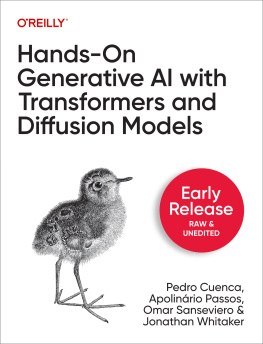
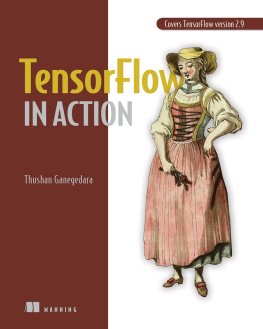

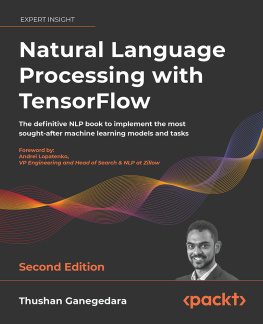
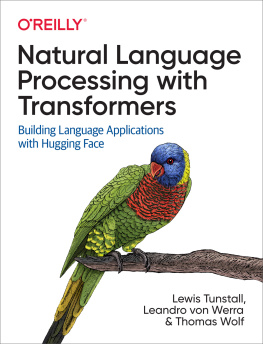
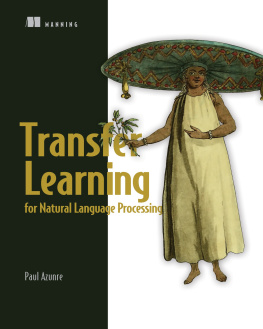
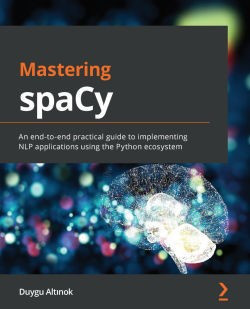
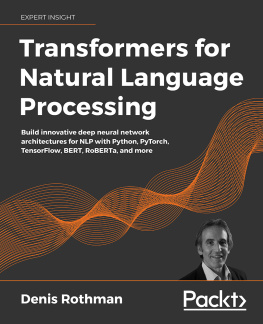
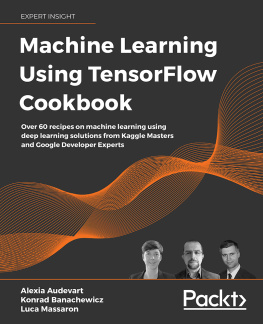

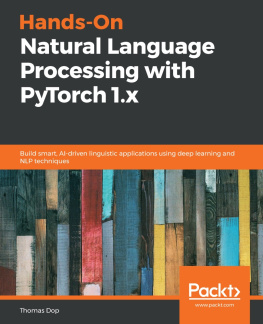
 Introduction toTransformers for NLPWith the Hugging Face Libraryand Models to Solve ProblemsShashank Mohan JainIntroduction to Transformers for NLP: With the Hugging Face Library andModels to Solve Problems Shashank Mohan Jain Bangalore, India ISBN-13 (pbk): 978-1-4842-8843-6 ISBN-13 (electronic): 978-1-4842-8844-3 https://doi.org/10.1007/978-1-4842-8844-3 Copyright 2022 by Shashank Mohan Jain This work is subject to copyright. All rights are reserved by the Publisher, whether the whole or part of the material is concerned, specifically the rights of translation, reprinting, reuse of illustrations, recitation, broadcasting, reproduction on microfilms or in any other physical way, and transmission or information storage and retrieval, electronic adaptation, computer software, or by similar or dissimilar methodology now known or hereafter developed. Trademarked names, logos, and images may appear in this book. Rather than use a trademark symbol with every occurrence of a trademarked name, logo, or image we use the names, logos, and images only in an editorial fashion and to the benefit of the trademark owner, with no intention of infringement of the trademark. The use in this publication of trade names, trademarks, service marks, and similar terms, even if they are not identified as such, is not to be taken as an expression of opinion as to whether or not they are subject to proprietary rights. While the advice and information in this book are believed to be true and accurate at the date of publication, neither the authors nor the editors nor the publisher can accept any legal responsibility for any errors or omissions that may be made.
Introduction toTransformers for NLPWith the Hugging Face Libraryand Models to Solve ProblemsShashank Mohan JainIntroduction to Transformers for NLP: With the Hugging Face Library andModels to Solve Problems Shashank Mohan Jain Bangalore, India ISBN-13 (pbk): 978-1-4842-8843-6 ISBN-13 (electronic): 978-1-4842-8844-3 https://doi.org/10.1007/978-1-4842-8844-3 Copyright 2022 by Shashank Mohan Jain This work is subject to copyright. All rights are reserved by the Publisher, whether the whole or part of the material is concerned, specifically the rights of translation, reprinting, reuse of illustrations, recitation, broadcasting, reproduction on microfilms or in any other physical way, and transmission or information storage and retrieval, electronic adaptation, computer software, or by similar or dissimilar methodology now known or hereafter developed. Trademarked names, logos, and images may appear in this book. Rather than use a trademark symbol with every occurrence of a trademarked name, logo, or image we use the names, logos, and images only in an editorial fashion and to the benefit of the trademark owner, with no intention of infringement of the trademark. The use in this publication of trade names, trademarks, service marks, and similar terms, even if they are not identified as such, is not to be taken as an expression of opinion as to whether or not they are subject to proprietary rights. While the advice and information in this book are believed to be true and accurate at the date of publication, neither the authors nor the editors nor the publisher can accept any legal responsibility for any errors or omissions that may be made. About the AuthorShashank MohanJain has been working in the IT industry for around 22 years mainly in the areas of cloud computing, machine learning, and distributed systems.
About the AuthorShashank MohanJain has been working in the IT industry for around 22 years mainly in the areas of cloud computing, machine learning, and distributed systems. About the Technical ReviewerAkshay Kulkarni is a renowned AI and machine learning evangelist and thought leader. He has consulted several Fortune 500 and global enterprises on driving AI and data scienceled strategic transformation.
About the Technical ReviewerAkshay Kulkarni is a renowned AI and machine learning evangelist and thought leader. He has consulted several Fortune 500 and global enterprises on driving AI and data scienceled strategic transformation.